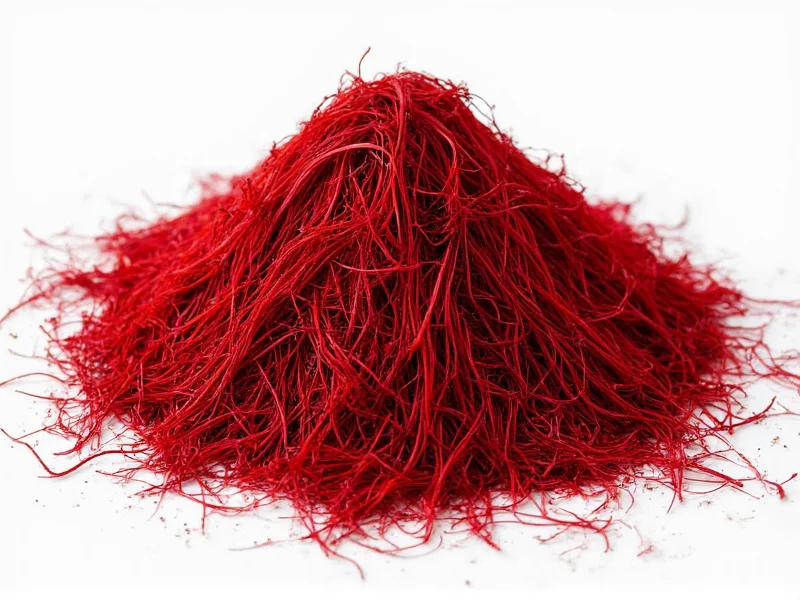As of 2024, genuine saffron costs between $200 and $1,500 per ounce, depending on quality grade, origin, and purity. Lower-grade saffron typically ranges from $200-$400 per ounce, mid-range quality sells for $400-$800 per ounce, while premium ISO 3632 Category I saffron commands $800-$1,500+ per ounce. These dramatic price variations reflect saffron's labor-intensive harvesting process and strict quality standards.
Understanding saffron pricing requires examining why this spice carries such a premium. Saffron remains the world's most expensive spice by weight due to its meticulous harvesting process. Each crocus flower produces only three stigmas, which must be hand-picked at dawn before the flowers fully open. It takes approximately 75,000 flowers (or 225,000 hand-picked stigmas) to yield just one pound of dried saffron. This labor-intensive process directly impacts the current saffron price per ounce across global markets.
Factors Influencing Saffron Cost Per Ounce
Several critical elements determine how much real saffron costs per ounce. The ISO 3632 grading system provides the most reliable framework for evaluating saffron quality and corresponding price points. This international standard measures crocin (color), picrocrocin (taste), and safranal (aroma) content to categorize saffron into three quality tiers.
| ISO 3632 Grade | Crocin (Coloring Strength) | Price Per Ounce | Characteristics |
|---|---|---|---|
| Category I (Premium) | ≥ 190 | $800-$1,500+ | Bright crimson threads, strong aroma, deep golden infusion |
| Category II (Mid-Range) | 150-189 | $400-$800 | Good color strength, moderate aroma, slightly less vibrant infusion |
| Category III (Commercial) | 80-149 | $200-$400 | Noticeable color, weaker aroma, may contain some yellow styles |
Geographical Impact on Saffron Pricing
Origin significantly affects saffron cost per ounce. Iranian saffron dominates global production (accounting for 90% of worldwide supply) and generally offers the best value, while Spanish saffron typically commands 20-30% higher prices due to branding and processing standards. Kashmiri saffron, though rare, often reaches premium price points exceeding $1,200 per ounce due to its exceptional coloring strength and limited availability.
When evaluating saffron price comparison by quality, watch for red flags that indicate potentially adulterated product. Genuine saffron should never cost less than $200 per ounce. Products priced below this threshold likely contain fillers like safflower, marigold petals, or artificial coloring. Authentic saffron threads should feel dry but pliable, release color gradually when placed in warm water, and produce a distinctive honey-like aroma.
Understanding Saffron Value Beyond Price
While the average cost of saffron per ounce seems high, proper usage reveals its economic value. A single ounce contains approximately 1,500-2,000 threads, sufficient for 150-200 dishes depending on recipe requirements. When calculating saffron cost per serving, premium saffron often proves more economical than lower grades that require larger quantities to achieve desired flavor and color.
For home cooks seeking quality saffron at fair price, look for vendors who provide ISO 3632 certification documentation and transparent sourcing information. Reputable suppliers will specify the exact crocin, picrocrocin, and safranal levels rather than using vague terms like "pure" or "premium" without supporting data. When comparing saffron price per ounce vs per gram, remember that ounce-based pricing often appears more economical but verify the actual weight measurements.
Seasonal fluctuations also impact current saffron pricing. Harvest yields vary annually based on weather conditions in primary growing regions (Iran, Spain, India, Greece). Drought or excessive rain during flowering season can reduce crop yields by 20-30%, causing temporary price spikes. Understanding these market dynamics helps explain why saffron price per ounce may fluctuate 15-25% year-over-year.
Is Saffron Worth the Investment?
For culinary applications, premium saffron delivers superior flavor complexity and vibrant color that cheaper alternatives cannot match. Professional chefs consistently report that Category I saffron requires 30-50% less quantity to achieve the same results as commercial-grade product, ultimately providing better value despite the higher initial saffron cost per ounce.
When determining if saffron is worth the price, consider these practical guidelines: store threads in airtight containers away from light, toast gently before use to maximize flavor release, and always steep in warm liquid rather than adding directly to dry ingredients. Proper handling ensures you extract maximum value from your saffron investment.
What is the minimum price for genuine saffron per ounce?
Authentic saffron should never cost less than $200 per ounce. Prices below this threshold typically indicate adulterated product containing fillers like safflower, marigold, or artificial coloring. Genuine saffron requires approximately 75,000 flowers to produce one pound, making extremely low prices economically impossible for pure product.
How can I verify if saffron is pure before purchasing?
Test saffron purity by placing a few threads in warm water. Genuine saffron gradually releases a golden-yellow color over 15-20 minutes while maintaining thread integrity. Adulterated products often bleed color immediately or leave red dye in the water. Also check for ISO 3632 certification documentation and avoid products with excessive yellow styles attached to the red threads.
Does saffron price per ounce differ between retail and wholesale purchases?
Yes, wholesale purchases typically reduce saffron cost per ounce by 15-25% compared to retail pricing. However, significant discounts (more than 30%) often indicate lower quality or potential adulteration. Reputable suppliers maintain consistent quality across retail and wholesale channels, with price reductions reflecting only packaging and distribution efficiencies.
Why does Spanish saffron cost more than Iranian saffron?
Spanish saffron typically commands 20-30% higher prices than Iranian saffron due to established branding, stricter processing standards, and European Union quality regulations. While Iranian saffron accounts for 90% of global production and often matches Spanish quality, the "Spanish" label carries premium market value regardless of actual quality differences. Always compare ISO 3632 grades rather than relying solely on country of origin.
How much saffron do I need for typical recipes?
Most recipes require 15-30 threads (0.05-0.1 grams) per serving. An ounce of saffron contains approximately 1,500-2,000 threads, sufficient for 50-130 servings depending on recipe intensity. Premium Category I saffron requires fewer threads to achieve desired results, making it more economical per serving despite higher initial saffron cost per ounce.











 浙公网安备
33010002000092号
浙公网安备
33010002000092号 浙B2-20120091-4
浙B2-20120091-4